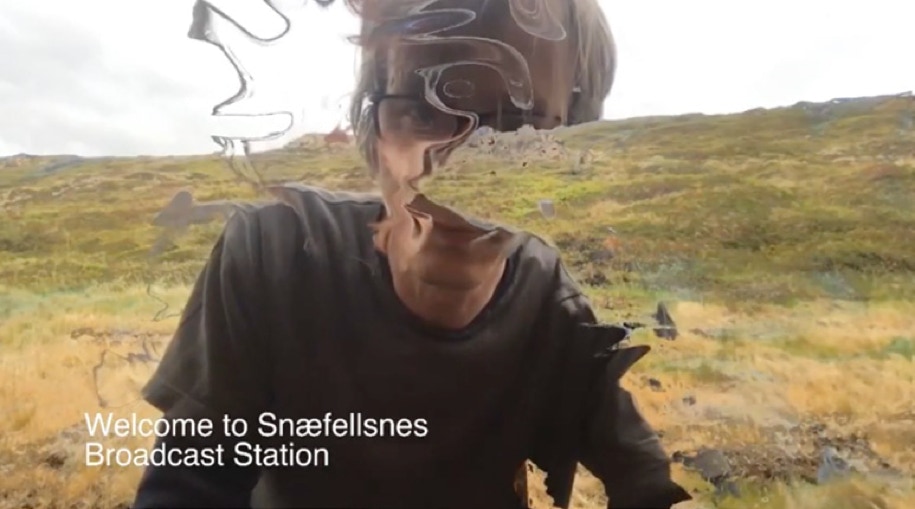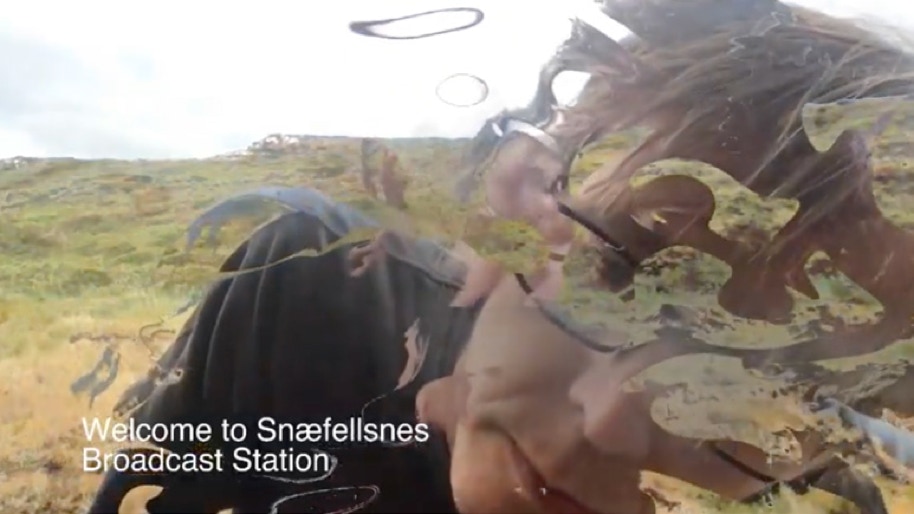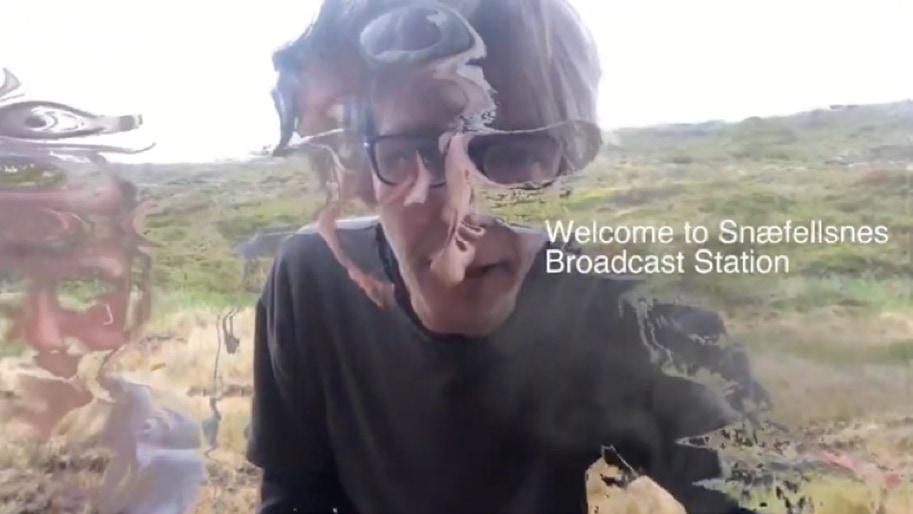In ‘Snæfellsness Broadcast Station’, Haraldur Karlsson reports live from Snæfellsnes, the artist playfully presents the surrounding land- scape in which he has created a simple set up of a wooden chair. A child occasionally shares the screen, waving to observers. Interspersed with the landscape scenes and the overlay of different video warping effects are weather maps of the Snæfellsnes peninsula with dramatic overlays of fire-spitting and tornadoes swirling. The work is seemingly a commentary on the role of the Snæfellsnes peninsula in local lore: it is the place where French author Jules Verne begins his 1871 Science Fiction classic, Journey to the Center of the Earth, with entering a dormant volcano. The peninsula is also known for its heavy mythology of el- ven lore or Hidden People. The lore attached to this geographic location in Iceland is now part of every marketing campaign introducing tourists to the area.
In a panel talk, Fritz Hendrik Berndsen dis- cusses the way in which Icelandic art history is full of landscape paintings created before the digital marketing of Iceland to tourists began, but it’s also where it began because Icelandic painters did not appreciate the value of the landscape before Danish poets began writing about their majesty. In ‘Snæfellsnes Broadcast Station’, Haraldur portrays a landscape being consumed by the digital, however, it is not only happening on a consumer level, but as part of surveillance culture. “The Icelandic landscape has a completely different meaning after Google Earth appears because now, you’re not alone in nature,” added Geirþrúður in the panel discussion, “there’s always a satellite above you.
In the context of Haraldur’s previous work with themes of expressing a holistic philosophy of science and art in which art reflects reality in its relation to man, the artist is the anti-hero, using the medium to be more human. There‘s always a Google Earth satellite even in the most isolated landscapes, making the world more known, and giving with it a „human angle“ permeated with the factors of being human, which also means seeing it, as Haraldur does with video editing software, through the historical prism of science and philosophy.





